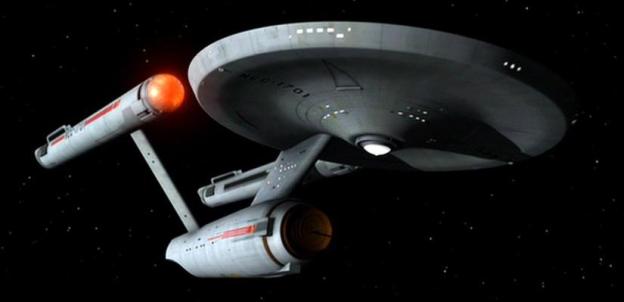
Everyone likes Star Trek. Even if you aren’t a fan of the show itself, you have to respect the ideals it contains. Peaceful exploration of space and making friends with weird, sexy aliens is the kind of thing mankind should aspire to. Its just too bad we’ll never be able to build a ship like the USS Enterprise to ferry us around the cosmos, huh?
Not so fast, bucko! It turns out that we totally can build the Enterprise. At least, according to this exhaustively detailed website.
Created by a relatively anonymous Trek fan who has spent the past 30 years working as an electrical and systems engineer at a Fortune 500 company, the site actually offers a well thought-out, surprisingly sane argument for why and how this project should be undertaken. He’s realistic about the difficulties of finding funding for the ship, and agrees that there are almost definitely political roadblocks to this thing’s completion, but beyond that he offers a host of compelling information.
He’s even got the “why” of this whole thing covered:
The USS Enterprise from Star Trek is a cultural icon, and we should latch part of the US space program on to this icon and build from there. We need a far grander vision of what we should be doing to get humans up into space and how we might gain a permanent foothold there. If we aren’t going to get a sustainable presence up there, then we should stop spending money for putting humans into space and instead focus on robotic missions like sending more advanced rovers to Mars, Venus, and elsewhere. If we are going to ask taxpayers to pay billions of dollars for projects to put Americans into space, it should be for an idea that they can relate to and be inspired by. The general form and characteristics of the spaceship should be inspirational – and building the first generation of USS Enterprise would surely be inspirational.
It’s true. The project would be inspirational, but the funding for this thing seems rather unlikely. According to the site, it will cost $50 billion over the next 20 years to construct this version of the Enterprise. Fortunately, our unnamed Trekkie already worked out how to find this money, with only minor tax increases and barely noticeable spending cuts to programs that are far less awesome than building Gene Roddenberry’s iconic spaceship.
Once we’ve built one of these ships, the site claims, we could the continue building an entire fleet, with new ships rolling off the line every three years. Thanks to the constant technological progress, each ship would be more advanced than the last while costing the same amount of cash. By the time we reach the 23rd century setting of the classic TV show, we should be able to field a ship far more capable than the one Captain Kirk commanded.
In the meantime, the site’s creator believes our fleet of ships could ferry us to Mars in as little as 90 days, while offering a comfortable 1g of on-board gravity and providing housing and workspaces for hundreds of explorers, scientists or especially adventurous, wealthy tourists.
Yes, we realize how it sounds, but before you roll your eyes at the idea, take a look at the website. If nothing else, it should provide you a few hours of entertainment while you pore over the man’s intensely detailed ship concept and ideas on how exactly to make this bird fly. If nothing else, it’s a better Trek fix than re-watching old seasons of Enterprise.


